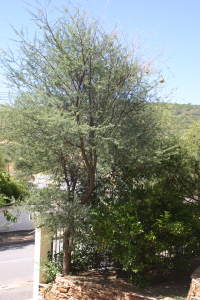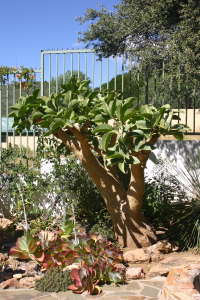

Gardening without water
There are two important thngs about this photograph, one is the walls and the other is what plants we have put in.
The walls
This is a bit of dry-stone walling of the kind that may Dalesman neighbour taught me years ago in Yorkshire. They will be still here long after the house has fallen down.
The general idea is to stop all the topsoil washing down into the road when it rains and it works perfectly.
Lost topsoil is a major issue in Namibia. Each year millions of tonnes of the stuff are washed into the South Atlantic and the odd thing is nobody seems bothered, It just an Act of God
They dont tolerate this kind of nonsense from the Almighty in Yemen where I've done a bit or working and walking. The Yemenis have an almost identical climate but they harvest 95% of all their rainwater in terraces and have been doing so for thousands of years. They use the terraces to grow qat.
There's an important lesson here. A good narcotics crop is much more effective at stimulating sound agricultural practices than an army of extension workers. They'd soon learn how not to lose topsoil
The plants
Acacias are perfect garden plants (except they get a bit big). They have long tap roots, they dont deplete the soil of water and goodies, they provide shade and, above all, they fix nitrogen. And you can chop them down and burn them, but not, as is not widely understood here, if you want them to continue doing all the other things.
To the right in the picture above is a Black Monkeythorn, acacia burkeii, which has spectacular catkin-like flowers in spring.
Opposite it and to the back is the real Monkeythorn, acacia galpinii which closes its leaves when it gets dark, sometimes just during a storm. A big fast growing tree that has an alarming tendency to reach down and part your scalp from your skull as you pass.


It gets you with these thorns; all acacias have these double thorns but often only up to giraffe height.
I have a collection of some that have passed fully intact through an elephant.
Both these acacias above have attracted weaver birds will not only weave their nests in the tree is also pull off as many of the leaves they possibly can so they can spot any marauding tree snakes. They dont nest in any of our non-indigenous trees
This one on the left sowed itself. Its an acacia tortilis, locally known as the Haak-en-steek which basically meaans that it it doesn't get you on the way in it'll get you on the way out.


